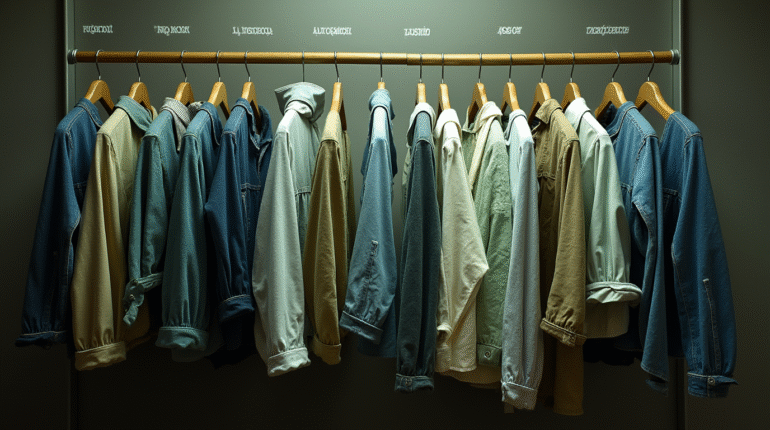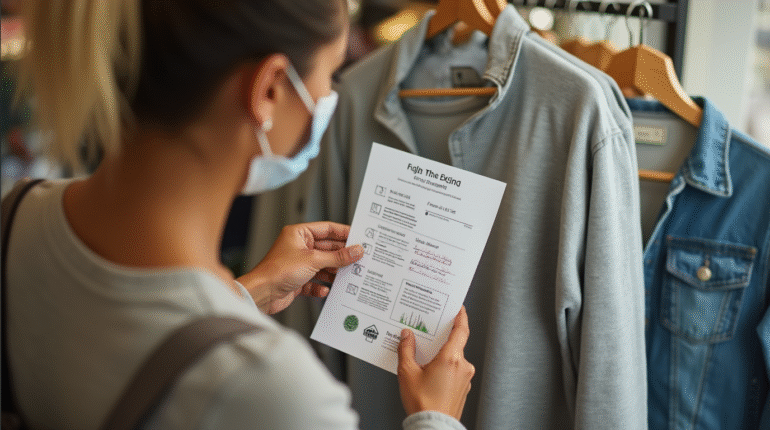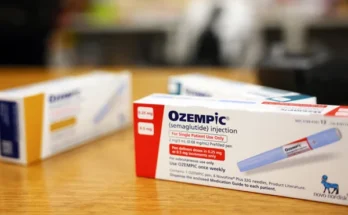What Is Greenwashing?
Greenwashing is a company that lies to its customers, saying that its products or practices are environmentally friendly when, in fact, they are not. In the fashion industry, where sustainability has become a prominent selling point, greenwashing is becoming shockingly prevalent. Brands employ vague language, deceptive labels, and half-truths to attach themselves to environmental values without actually changing their operations.
The phrase joins “green” (eco-friendly) with “whitewashing” (masking up unpleasant facts). It’s marketing over matter—a means to enhance sales and reputation without truly tackling sustainability issues.
The Rise of “Sustainable” Fashion Claims
As more consumers ask for sustainable products, more brands are greenwashing: rebranding themselves as sustainable and calling collections “eco-collections” simply because they use some recycled material, or making empty climate action pledges. Claims like this without transparency, data, or independent verification do not stand up to scrutiny.

For example, “eco-friendly,” “green,” “conscious,” “responsibly made”— these are terms right now being thrown around with zero legal definition and zero scientific definition, which means there is room for interpretation or deception.
H&M, Zara, and Shein have all been criticized for launching “green” while continuing to mass-produce clothes at breakneck speed, a contradiction in terms of sustainability.
Labels and Buzzwords that are Misleading
This is by far the most common form of greenwashing: exploitation of buzzwords and vague labeling.
- “Sustainable material” could mean just one element in the garment. For example, it could be the tag or thread.
- “Recycled” can mean 5% total material, or sometimes even less than that!
- “Vegan leather” is often made from PVC or other plastics that are harmful to the environment.
Most often, “vegan leather” is made from PVC or other plastics, which do great harm to the environment.
The Truth of Fast Fashion
Even brands that say͏ sustain͏ability often work within fast fashion models–making huge amounts of clothes, pushing overconsumption, and using cheap labor in countries with few rules. These ways are not okay with sustainability.
Making one cotton shirt can use more than 2,700 liters of water. The fashion industry is also in charge of about 10% of the world’s carbon emissions, making it one of the dirtiest industries in the world.

So when a fast fashion giant drops a “green” line, critics say͏ it’s just a way to take your mind off the bigger environmental damage from the brand’s way of doing business.
Who’s Policing Green Claims?
Currently, the control of environmental advertisements is not strict. It is not like in many other sectors, there are no definite standards concerning sustainable fashion in many countries. But some watchdogs and consumer groups are pushing back.
For example:
- The Norwegian Consumer Authority reprimanded H& M for making unsubstantiated claims in their ‘Conscious Collection’.
- The EU Green Claims Directive proposed for 2023 would seek to outlaw ambiguous environmental claims unless verifiable by science.
Legal pressure will force brands to be much more open and honest about their sustainability efforts in the future.
Consumers play a critical role in holding brands accountable
Here are some ways consumers can avoid falling for greenwashing tricks:
- Look for certified labels such as GOTS (Global Organic Textile Standard), Fair Trade, OEKO-TEX, and others.
- Research whether a brand is transparent on the supply chain,
- and whether they display factories and materials. Be wary of ‘capsule collections’ that don’t align with the rest of a brand’s business model,
- do they display factories and materials? Be wary of ‘capsule collections’ that don’t align with the rest of a brand’s business model
Being aware is the first step toward consuming ethically.

Food Security: Beyond Marketing
Cloth selection is not the only category in wherein real fashion sustainability emerges. There are:
- Reductions in the entire production and consumption levels
- Wages under proper working conditions
- Carbon-neutral sourcing
- Long-lasting, repairable designs
Some small or independent brands do practice true commitment toward slow fashion and circular design, but they invariably fall under the shadow of big names with even bigger advertising budgets.
The Need for Cultural Change
Greenwashing thrives because the fashion industry has not yet evolved beyond offering novelty and speed, and even allowing them to come with profit over ethics. True transformation demands a systemic overhaul alongside an alteration in consumer behavior. That is, valuing quality over quantity, repairing rather than replacing, learning to ask hard questions about how—and why—we shop.

Brands should be made accountable not only by imposing regulations but also by making consumers keep scrutiny and pressure. Informed consumers will drive the demand for real sustainability, making greenwashing a risk rather than a reward.
Transparent Rather than Trendy
With the climate emergency getting worse, real sustainability has got to take the place of token efforts. The fashion industry has miles to cover in making itself truly sustainable—not just yet, but awareness is growing. By learning how to spot greenwashing, consumers will be able to push the industry into actual meaningful change, where ethics, transparency, and environmental responsibility become much more than mere marketing buzzwords.



